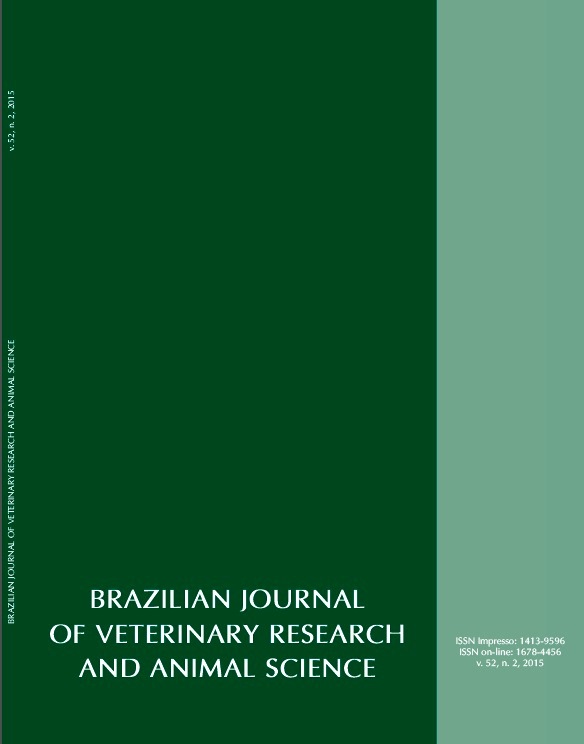Evaluation of reactivity of horses in the presence of unknown stimulus
DOI:
https://doi.org/10.11606/issn.1678-4456.v52i2p167-172Keywords:
Horse, Behavior, TemperamentAbstract
The study aimed to evaluate reactivity of horses during usual brushing management against the repeated presence of an unknown sonorous stimulus. Twenty Mangalarga Marchador horses, distributed in different categories (mares and foals), were evaluated. The animals were allocated into the control treatment (N = 10) and the treatment with unknown sonorous stimulus (N = 10) from a rattle and a tambourine. Four consecutive evaluations were carried out first (day 0, 1, 2, 3). Two consecutive assessments were carried out after 30 days of the first collection (day 30 and 31), and two consecutive assessments were carried out 15 days after the second evaluation (day 45 and 46). The behavioral observations were made by assigning a score to behaviors of movement, position of ears and eyes, breathing, and vocalization during brushing management. A response variable called reactivity was attributed to each animal, ranging from score 1 (not reactive or calm animal) to reactivity score 4 (very reactive or aggressive animal). For statistical analysis, the results were adjusted to a logistic regression model using the categories, day, and treatment as covariates. The animals of the unknown stimuli showed greater reactivity. The days of the experimental period influenced the reactivity of animals between 6 and 7 months old, with a decrease in the possibilities of the animals to have a higher reactivity. The maturity of the foal with repeated exposure to the unknown sound stimulus may decrease the possibility of the animal being reactive.
Downloads
Downloads
Published
Issue
Section
License
The journal content is authorized under the Creative Commons BY-NC-SA license (summary of the license: https://





